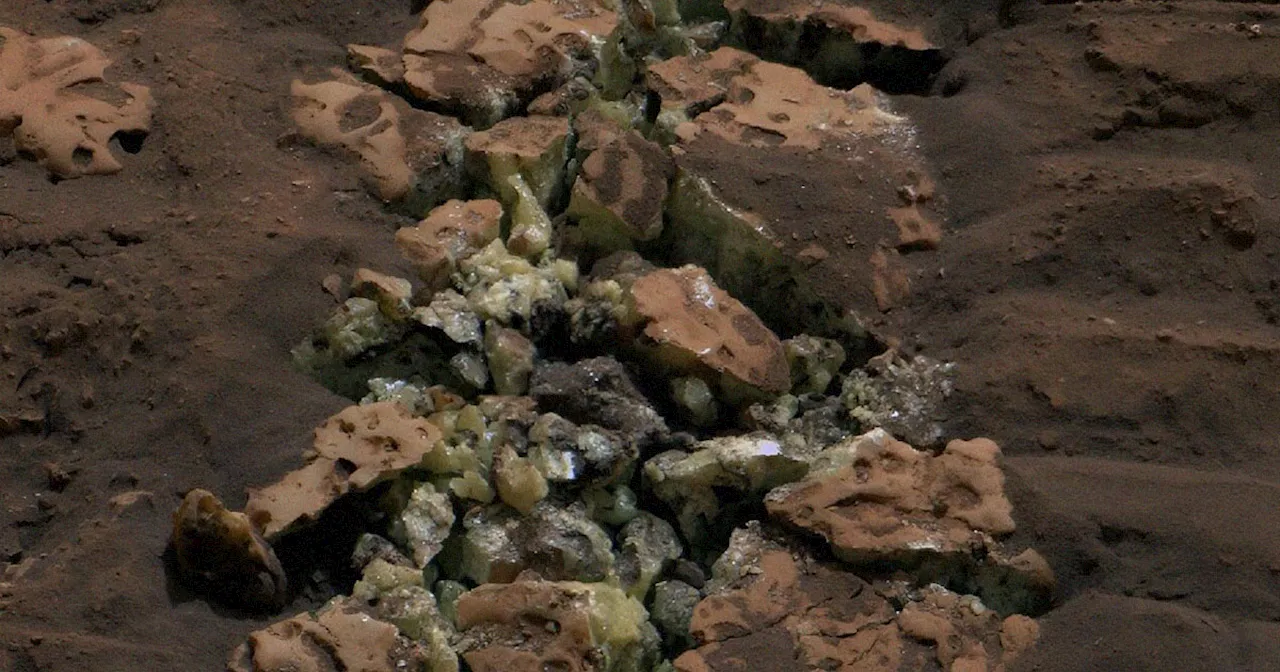The idea of transforming Mars into a world more hospitable to human habitation is a regular feature of science fiction. But could this be done in real life?
<p>WASHINGTON — The idea of transforming Mars into a world more hospitable to human habitation is a regular feature of science fiction.
</p><p>This alone would not make Mars habitable for people, but the scientists who developed the proposal see it as a potentially doable initial step.
Traffic Weather Sports Classifieds Cars Jobs Homes Television Radio Salt Lake Utah Local
United States Latest News, United States Headlines
Similar News:You can also read news stories similar to this one that we have collected from other news sources.
 Scientists propose warming up Mars by using heat-trapping 'glitter'Reuters
Scientists propose warming up Mars by using heat-trapping 'glitter'Reuters
Read more »
 Scientists Propose Low Cost Plan for Terraforming MarsScience and Technology News and Videos
Scientists Propose Low Cost Plan for Terraforming MarsScience and Technology News and Videos
Read more »
 Scientists lay out revolutionary method to warm MarsEver since we learned that the surface of planet Mars is cold and dead, people have wondered if there is a way to make it friendlier to life. The newly proposed method is over 5,000 times more efficient than previous schemes to globally warm Mars, representing a significant leap forward in our ability to modify the Martian environment.
Scientists lay out revolutionary method to warm MarsEver since we learned that the surface of planet Mars is cold and dead, people have wondered if there is a way to make it friendlier to life. The newly proposed method is over 5,000 times more efficient than previous schemes to globally warm Mars, representing a significant leap forward in our ability to modify the Martian environment.
Read more »
 Scientists think atmospheric ‘glitter’ can warm Mars over 50 degreesAndrew Paul is Popular Science's staff writer covering tech news. Previously, he was a regular contributor to The A.V. Club and Input, and has had recent work featured by Rolling Stone, Fangoria, GQ, Slate, NBC, as well as McSweeney's Internet Tendency. He lives outside Indianapolis.
Scientists think atmospheric ‘glitter’ can warm Mars over 50 degreesAndrew Paul is Popular Science's staff writer covering tech news. Previously, he was a regular contributor to The A.V. Club and Input, and has had recent work featured by Rolling Stone, Fangoria, GQ, Slate, NBC, as well as McSweeney's Internet Tendency. He lives outside Indianapolis.
Read more »
 Meteorites from Mars help scientists understand the red planet's interiorOf the more than 74,000 known meteorites—rocks that fall to Earth from asteroids or planets colliding together—only 385 or so stones came from the planet Mars.
Meteorites from Mars help scientists understand the red planet's interiorOf the more than 74,000 known meteorites—rocks that fall to Earth from asteroids or planets colliding together—only 385 or so stones came from the planet Mars.
Read more »
 NASA Scientists Startled When Mars Rover Drives Over Rock, Cracking It and Revealing Glinting Crystals WithinScience and Technology News and Videos
NASA Scientists Startled When Mars Rover Drives Over Rock, Cracking It and Revealing Glinting Crystals WithinScience and Technology News and Videos
Read more »
